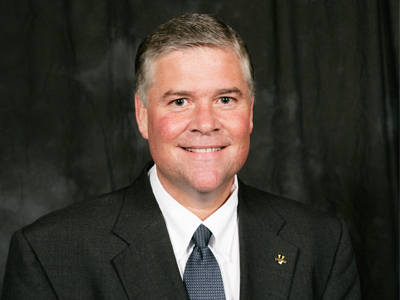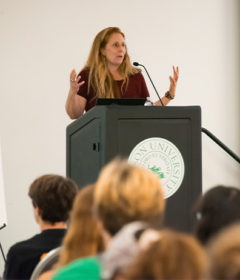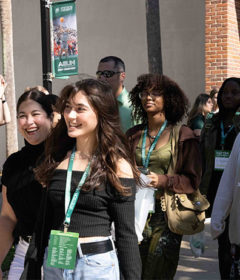Performance Philanthropy: Changing the World of Giving
Giving Tuesday takes place the first Tuesday after Thanksgiving and is the day designated, worldwide, for giving back. It’s a significant time for making an impact, especially because Giving Tuesday (#GivingTuesday) is only celebrating its third birthday this year. The phenomenon of giving – especially online – has skyrocketed in recent years, and donors are changing as much as donations.
 Today’s donors are increasingly savvy, engaged, informed and results-oriented; however, this does not mean they are tightening the purse strings. Last year, charitable giving in the United States totaled more than $335 billion, which neared the nation’s pre-recession peak, according to the Giving USA Foundation and its research partner, the Indiana University Lilly Family School of Philanthropy. But modern-day donors are increasingly demanding that organizations and institutions provide programs, results, metrics, engagement and transparency on a par with “performance philanthropy”– a term coined by Geneva Global, a for-profit, social-enterprise organization.
Today’s donors are increasingly savvy, engaged, informed and results-oriented; however, this does not mean they are tightening the purse strings. Last year, charitable giving in the United States totaled more than $335 billion, which neared the nation’s pre-recession peak, according to the Giving USA Foundation and its research partner, the Indiana University Lilly Family School of Philanthropy. But modern-day donors are increasingly demanding that organizations and institutions provide programs, results, metrics, engagement and transparency on a par with “performance philanthropy”– a term coined by Geneva Global, a for-profit, social-enterprise organization.
“It’s sort of a rigorous and results-oriented approach to philanthropy,” said Ava Lala, a director with Geneva Global, which has managed $140 million in client grants to-date and is celebrating its 15 anniversary in December. “It’s about transparency and metrics to ensure you are not just funding activities but you are also generating results.”
Jeff Ulmer, Vice President for University Development and Alumni Engagement at Stetson University, agrees with this view of philanthropy. (See Stetson’s involvement in Giving Tuesday.)
“Donors are so much more sophisticated now than they were 20 years ago in terms of demanding to see the benefit derived from their investments,” said Ulmer. “We have some donors who request to see budgets before making their decisions. They want to know that an organization will be a good steward of their funds.”

He attributes changes in giving, at the university level, to the economy, political landscape as well as to societal changes brought on by the Digital Era. For the first time last year, there were more mobile devices on the planet than people and the ensuing applications are profoundly impacting businesses and institutions, which are learning to become responsive to social networkers to avoid online firestorms; identify new best practices, like transparency; and adjust to incessant change, chatter, competition, information overload, skepticism and the need to rise above the din to be heard.
“I don’t know that we’ve seen the full blast of what we will see when today’s young adults – who have propelled a lot of this change – are 15 or 20 years older and in a position to make even greater financial contributions,” said Ulmer. “But the future is bright for institutions that pay attention to them, strive to deliver impact and communicate the value in what they do.”
According to Doug Balfour, Geneva Global’s CEO and author of the upcoming book “Doing Good Great,” the values of today’s young adults will ultimately change U.S. society. He said that there has already been enormous growth in the area of sustainability, which will be propelled by the transfer of the nation’s wealth within the next couple of decades. “We have seen sustainability as a green issue, but it has become much more of a social issue,” he said. “It may take us 20 years or so but fundamentally even the term sustainable impact investment may seem anachronistic in 25 years because that’s the way all good business is done.”
Today’s young adults were introduced to environmental issues at a young age, which is important. For example, CNN founder Ted Turner, a renowned philanthropist who pledged $1 billion to the United Nations Foundation in 1997, masterminded a TBS environmental program for children called “Captain Planet and the Planeteers.” The resulting nonprofit, the Captain Planet Foundation, is now run by his daughter Laura Turner Seydel and her husband. CPF is a grant-making foundation that has distributed more than $2.5 million to fund over 1,800 hands-on environmental education projects with schools and non-profits that serve children in all 50 states and in 23 countries.
“We give grants for a variety of environmental projects, like restoring wetlands, planting trees, recycling programs, underwater robotics/clean-ups, and planting pollinator gardens, which is the ultimate gift that keeps on giving because they all preserve our precious natural resources and life-support systems,” said Turner Seydel. “Kids, need to be empowered through hands-on experience. The only way to do this is to get the kids out of their chairs away from screens and out in nature becoming empowered and inspired through hands on learning and environmental stewardship projects.”
“It’s simply essential to show people how larger societal issues are relevant to them,” said Ulmer, who joined Stetson University six months ago. “For example, Florida is known for its beautiful natural springs and lakes, and, in many cases, we are not sustaining this anymore. Overdevelopment, digging and new infrastructure have rechanneled water to the extent that the state is now concerned about its potable water in the future. At Stetson University, we are working on environmental freshwater initiatives via the College of Arts and Sciences. Many alumni and friends are involved in these efforts, giving time, energy and money because they know Stetson has much to offer toward securing our water resources now and in the future.”
Even in the Information Age, Ulmer is finding that charitable giving remains steadfastly driven by real-world relationships and the attainment of real-world outcomes. “It’s not just goodwill anymore,” said Ulmer. “People want to be impactful, which means a partnership emerges between the donor and the institution. It’s a partnership that evolves over time as a donor begins to see the transformational effect of philanthropy.”
Stetson’s development office is driven by the leadership of President Wendy Libby. She brought collegiate football back onto campus in 2013, is overseeing the student union’s $26 million expansion and has plans for further facility development up ahead.
“For example, the Family Enterprise Center in Stetson’s School of Business Administration teaches family-owned companies how to deal with governance issues,” said Ulmer. “It’s one of the very few in the country. A lot of very influential people are becoming involved in that program.”
Looking forward, expect to see people, institutions and foundations become even more judicious with their donations.
“Fifteen to 20 years ago, we always talked about fulfilling our needs, as institutions. As time went on, donors often wanted more involvement, and we had to step back and ask what the donors wanted to achieve through their giving. Today, you have to be creative and constantly innovate. We also know that the way we are doing things now won’t be the same in five years.”
Giving Tuesday is inspired by the season of giving, which has more commonly been characterized by consumer-focused occasions like Black Friday and Cyber Monday. Funds donated on Giving Tuesday doubled last year to $27 million, according to the Huffington Post, and they are expected to double again this year.
Food for thought as we enter this holiday season.



